Kodak film helps serve up a slice of the '70s for Paul Thomas Anderson's 'Licorice Pizza'
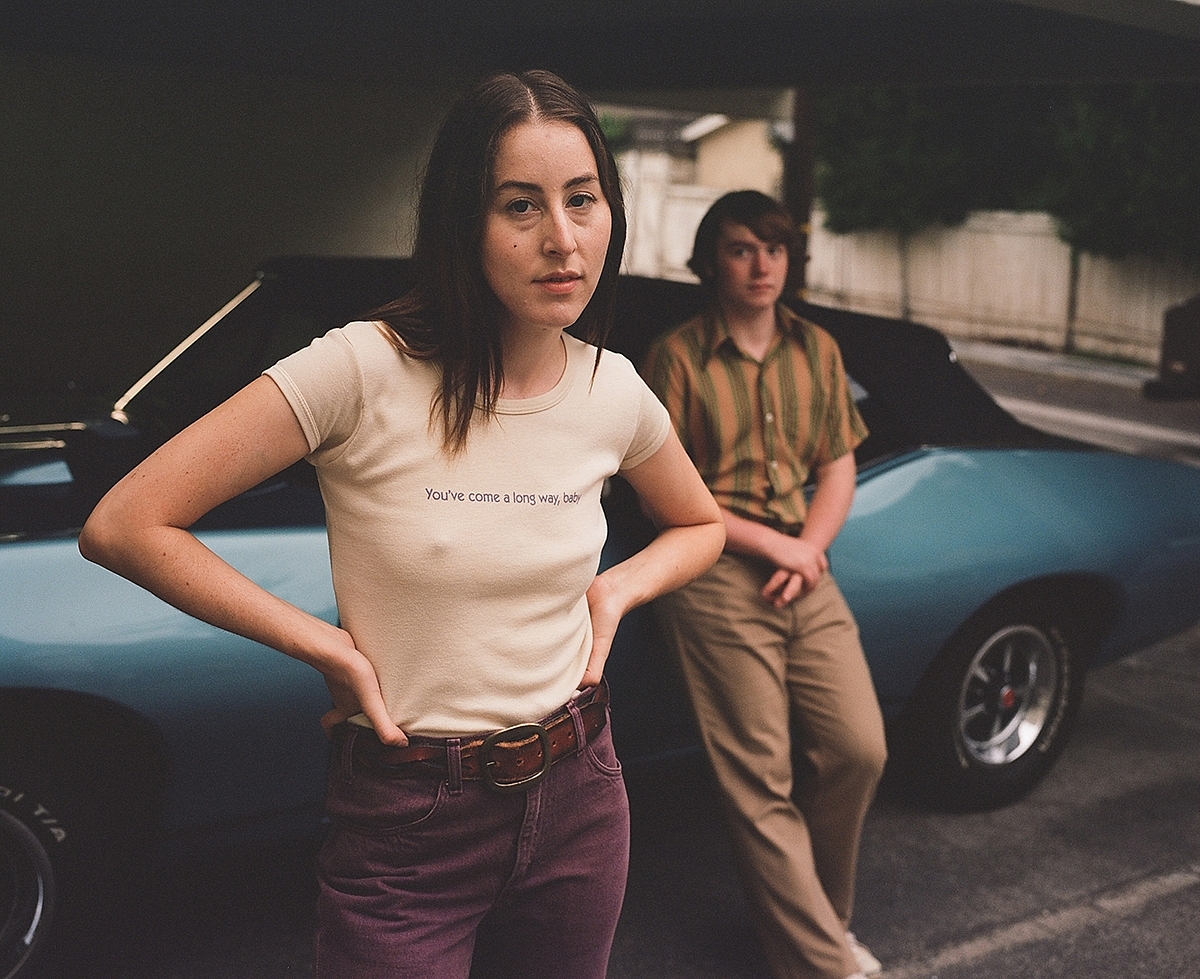
Alana Haim and Cooper Hoffman during production on Paul Thomas Anderson’s "Licorice Pizza." Photo by Paul Thomas Anderson. © 2021 Metro-Goldwyn-Mayer Pictures Inc. All Rights Reserved.
The course of true love never did run smooth. Filmed on KODAK 35mm and described as an exquisitely crafted, nostalgic hallucination, Licorice Pizza is the fictional story about Gary Valentine, a precocious, entrepreneurial high-schooler, and his unconquerable crush on the older Alana Kane.
Set in 1973, the comedic, coming-of-age comedy drama tracks the haphazard course of first love as Gary and Alana grow up and run around the San Fernando Valley area of Los Angeles together, experiencing a variety of colorful, madcap and enlightening escapades.
Licorice Pizza stars Alana Haim and Cooper Hoffman, making their big-screen debuts, with cameo appearances from Sean Penn, Tom Waits, Bradley Cooper, Benny Safdie and Anderson’s long-term partner Maya Rudolph. It also has a memorable soundtrack featuring songs-of-the-day, plus original tracks and incidental music composed by Radiohead musician Jonny Greenwood.
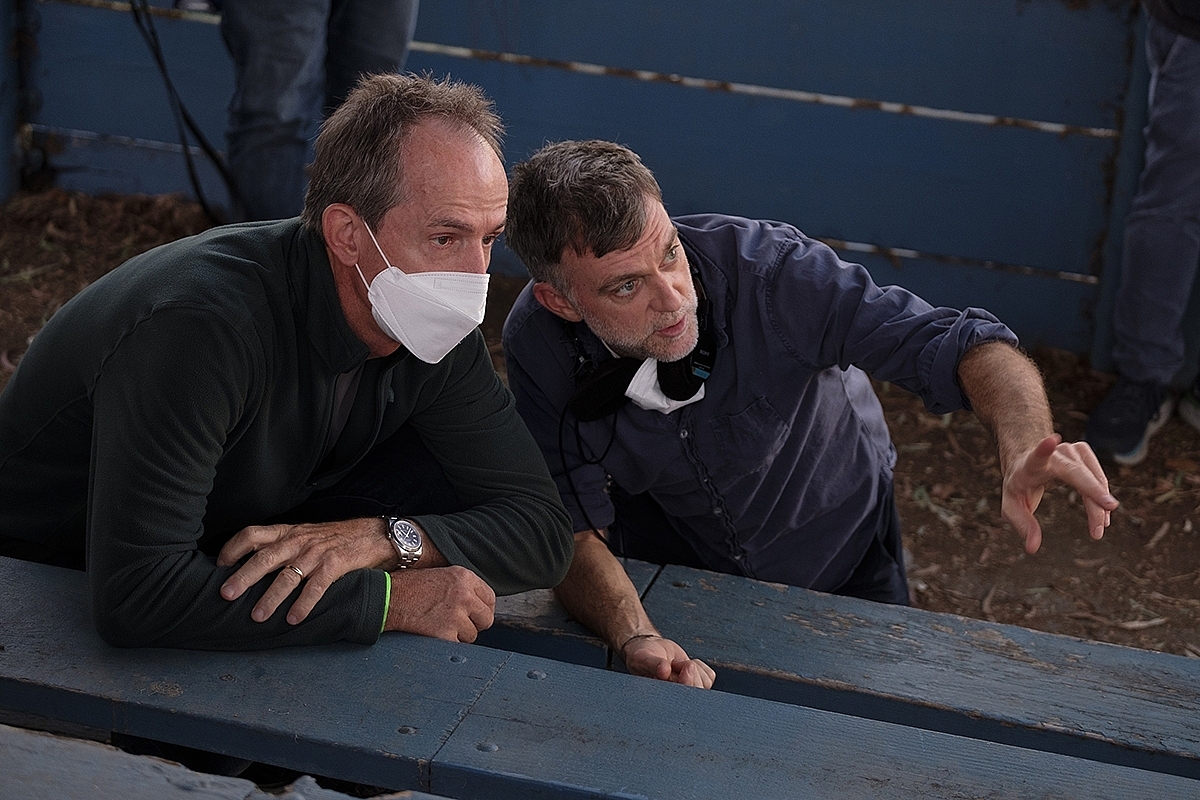
A moment from Paul Thomas Anderson's "Licorice Pizza." Photo by Melinda Sue Gordon. © 2021 Metro-Goldwyn-Mayer Pictures Inc. All Rights Reserved
The acclaimed feature was written and directed by Paul Thomas Anderson (PTA), with Anderson and Michael Bauman (perhaps best-known as an industry-leading gaffer) sharing the director of photography credit on the movie, and Colin Anderson collaborating as camera operator.
After its general release on December 25, 2021, Licorice Pizza received high praise from critics and garnered three awards from the National Board of Review, including Best Film. It was also named one of the best films of 2021 by the American Film Institute, received four nominations at the 79th Golden Globe Awards, and looks set to attract further accolades in the 2022 awards season.
“PTA and I spent a lot of time, perhaps the best part of a year, working out the particular cocktail recipe for the visual language of this movie,” says Bauman, who has been the gaffer on more that 40 celluloid-originated movies, including Anderson’s The Master (2012) and Inherent Vice (2014). He previously worked as the lighting cameraman in the collaborative cinematographic effort on Anderson’s multiple award-winning Phantom Thread (2017), also shot on KODAK 35mm film.
“Before any production, PTA tests like crazy – at locations, with the actors, with different filmstocks, exposures, lenses and lighting set-ups – all to get to the look he wants, and it was no different on this production in order to create an authentic evocation of the 1970s.”
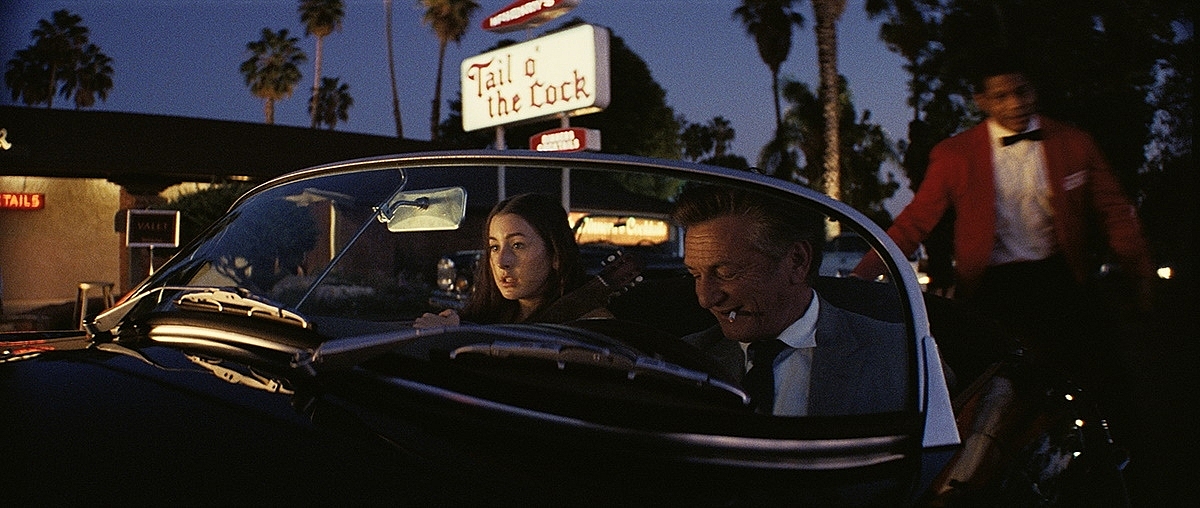
A moment from Paul Thomas Anderson's "Licorice Pizza." © 2021 Metro-Goldwyn-Mayer Pictures Inc. All Rights Reserved.
Filming on Licorice Pizza took place over 68 days, starting in August 2020 and wrapping in November, at locations chiefly around the west San Fernando Valley, in an area roughly bounded by the 405, 170 and 101 freeways. These included Encino, Van Nuys, Canoga Park and Woodland Hills. The Tail O’ the Cock, a famed local restaurant that was demolished in 1987, was recreated for the film at Van Nuys Golf Course, where the movie’s motorcycle stunt sequence was also filmed.
“PTA grew up in this part of Los Angeles, and I remember cycling around those areas with him during a CicLAvia event way before we shot the movie,” Bauman recollects. “It was clear he had a deep connection to those places. He knew aesthetically what he was looking for, and they played a fundamentally important role in the visual storytelling.”
So too did the creative references, which included American Graffiti (1973, dir. George Lucas, DPs Jan D'Alquen & Ron Eveslage, with Haskell Wexler ASC as visual consultant) and Manhattan (1979 dir. Woody Allen, DP Gordon Willis ASC).
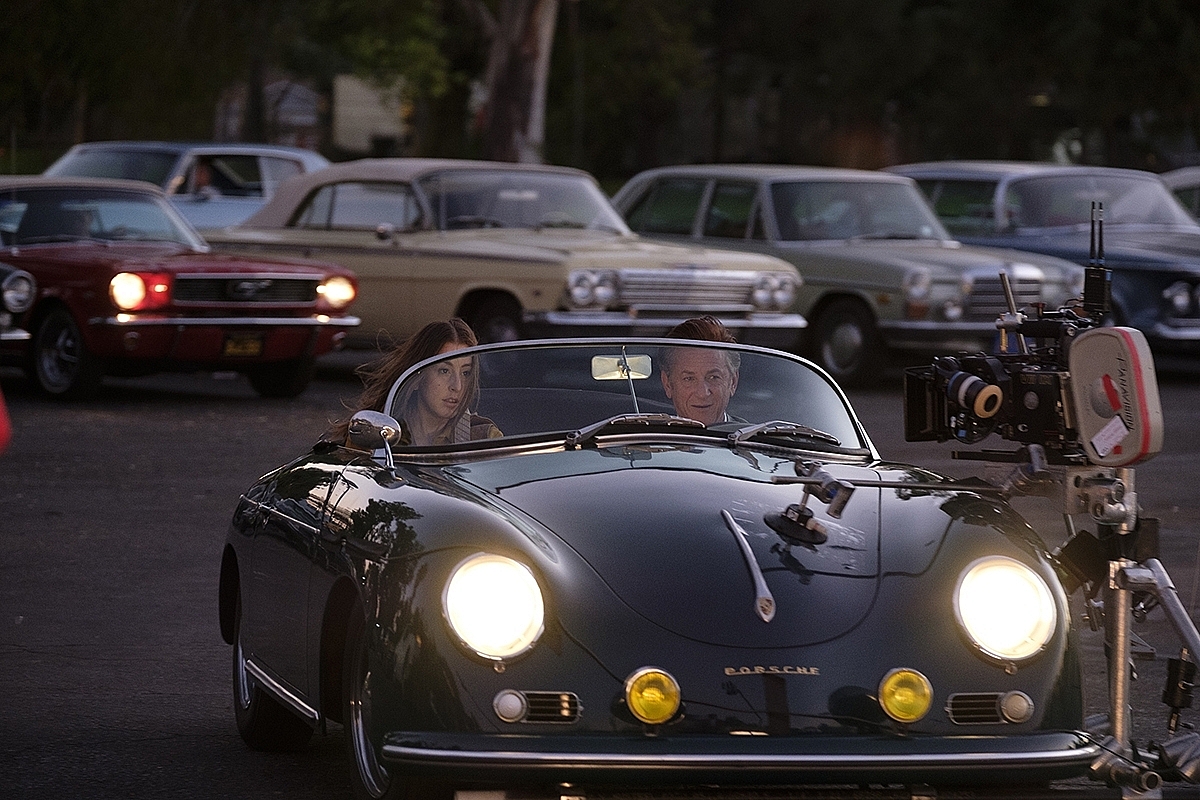
A moment from Paul Thomas Anderson's "Licorice Pizza." Photo by Melinda Sue Gordon. © 2021 Metro-Goldwyn-Mayer Pictures Inc. All Rights Reserved.
“PTA has a screening room at his house where he can project 35mm and 70mm movie film prints,” Bauman recalls. “During prep, looking at film prints is a critical step in the process of creating the look, and he asked me over to view a couple movies as reference points. We watched American Graffiti and Manhattan multiple times and considered them as much for their filmic texture, lensing and widescreen framing styles, as we did for how they were lit…or not lit actually, because neither of them had very much money.
“For example, Woody Allen’s classic, Manhattan, has a walk-and-talk at night, for which the DP, Gordon Willis ASC, used something like a SunGun over the camera to illuminate the actors and went with whatever was going on in the background, like streetlights and car headlights. So we embraced that style, that way of working, typically using a LiteGear LiteMat as the main source for our walk-and-talks, and letting the backgrounds be dark, all as part of our ‘70s visual ingredients.”
Digital capture was never an option for Anderson, who prefers to shoot and post-produce all his features exclusively on film. Working with Panavision in Woodland Hills, California, Bauman and Anderson settled on shooting with the same pair of Panavision Millennium XL2 35mm film cameras that were used on the J.J. Abrams-directed Star Wars Episode VII: The Force Awakens. At the behest of that film’s DP, Dan Mindel ASC BSC, the cameras were specially decorated in matte black and individually engraved with the monikers ‘Millennium Falcon’ and ‘Death Star’.

Co-cinematographer Mike Bauman on the set of Paul Thomas Anderson's "Licorice Pizza." Photo by Melinda Sue Gordon. © 2021 Metro-Goldwyn-Mayer Pictures Inc. All Rights Reserved.
Lenses were another crucial item in creating the period aesthetic Anderson was going for. As Bauman explains, “In the digital world where everything is about super-clean, 4K images, and getting as much information and resolution on the screen as you can, PTA likes to use lenses and film processing to degrade the image, so it has texture and delivers a connection to the audience. That’s where a lot of our decisions about the lensing came from.”
This saw the director working closely with Panavision vice president of optical engineering, Dan Sasaki, on the choice of glass.
“Dan is the foremost lens master on the planet,” says Bauman. “He and PTA have a really good working relationship. We shot Licorice Pizza primarily with old-school Panavision C-series Anamorphics from the ‘60s and ‘70s, which bring nice contrast, fall-off and aberrations to the image, as well as the characteristic blue flare that you can see in shots such as in our golf course motorcycle stunt scene.
“However, Paul owns his own lenses, such as an old 50mm Pathé and other vintage spherical glass, and depending on the movie and format we shoot, Dan will convert them from spherical to Anamorphic. On this film, Dan also came to the party with a bunch of other, ‘Frankenstein’ lenses that he had made up himself.
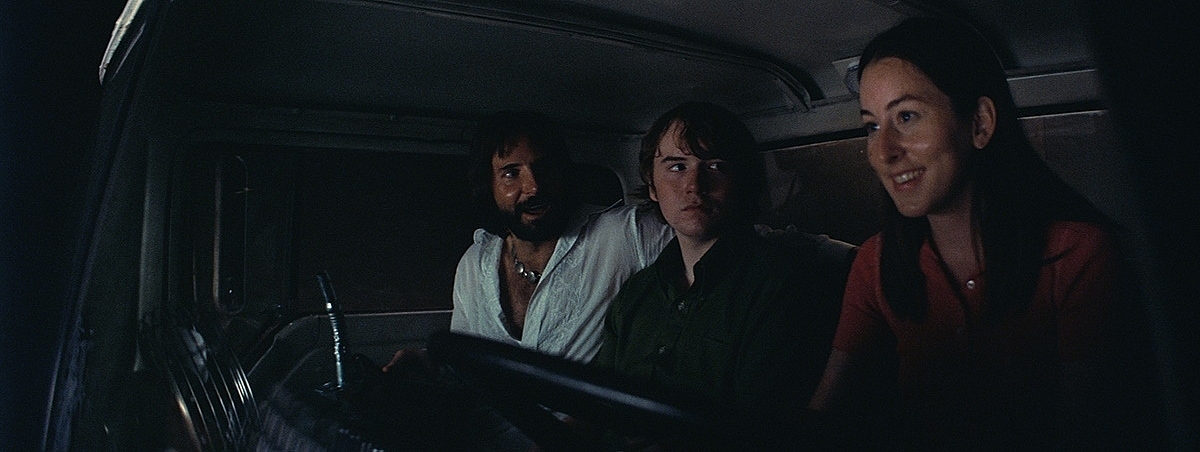
A moment from of Paul Thomas Anderson's "Licorice Pizza." © 2021 Metro-Goldwyn-Mayer Pictures Inc. All Rights Reserved.
“So we ended up with two or three versions of the same focal lengths and would see how they responded to the light, their flaring and bokeh characteristics at any given moment before PTA decided on set which one to use.
“A good example is the sequence when Gary and Alana go to see Mrs. Grady, the talent agent. The vintage glass we used on Mrs. Grady’s close-ups gave such a beautiful soft flare and bloom to the image that really supported the period look-and-feel.”
Bauman also notes, “When it came to choosing lenses or camera positions, it was very much a collaborative decision between PTA, myself and Colin, our world class camera operator. PTA typically puts a stake in the ground, shares his opinions about what he wants, and we build off that idea.”
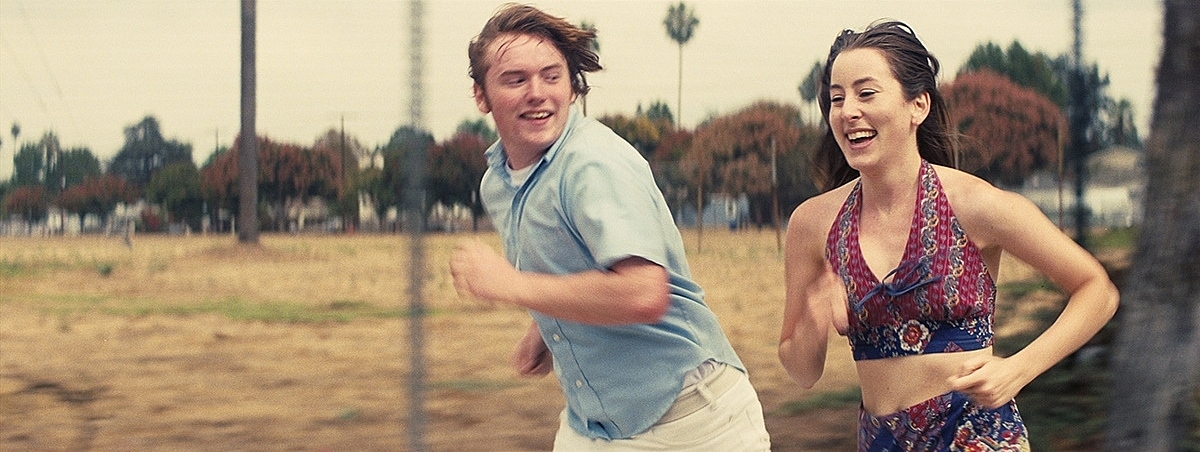
A moment from of Paul Thomas Anderson's "Licorice Pizza." © 2021 Metro-Goldwyn-Mayer Pictures Inc. All Rights Reserved.
As a rule of thumb, Bauman shot using KODAK VISION3 500T Color Negative Film 5219 for night and low-light scenes, KODAK VISION3 200T Color Negative Film 5213 for day interior/exteriors, and KODAK VISION3 50D Color Negative Film 5203 for day exteriors.
“I love shooting on film for many reasons,” he says, “the first amongst those being the kind and realistic way it captures skin. Plus, there is a unique quality to the overall celluloid image – a patina and softness that is difficult to achieve in digital – that helps you evoke a period in time.
“I also like the process, the rhythm of ‘Lights… camera… action’ that comes with celluloid production. There are some good things about digital image capture, but one of the downsides of digital production is when the camera is just kept rolling and rolling. When you have four or 11 minutes of film in the magazine, people get really focussed on set.
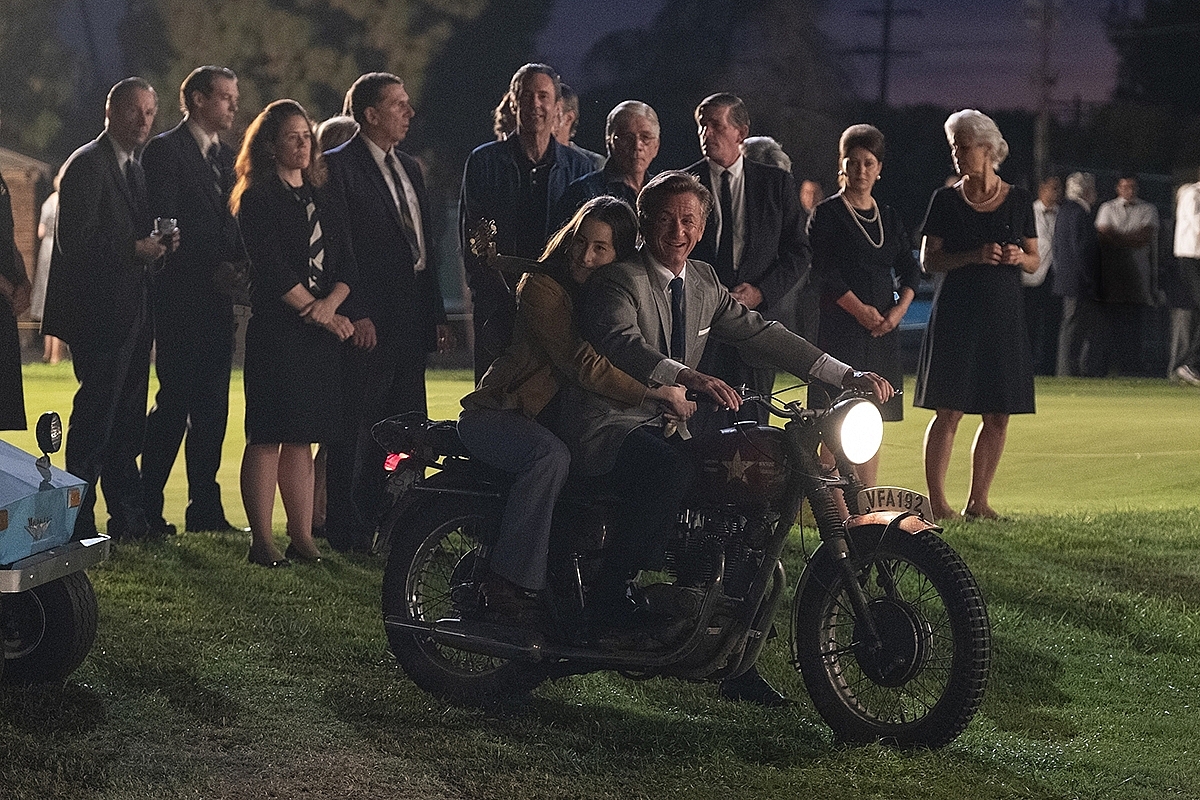
A moment from of Paul Thomas Anderson's "Licorice Pizza." Photo by Melinda Sue Gordon. © 2021 Metro-Goldwyn-Mayer Pictures Inc. All Rights Reserved.
Working under the auspices of post-production supervisor Erica Frauman, Fotokem did all the negative processing and printing of film dailies, as well as the celluloid deliverables for the eventual film neg-cut and photochemical finish on the movie.
“Yes, we had the luxury of watching printed dailies,” Bauman remarks. “All selects were printed, and the different heads of departments were invited to view them with PTA at projected screenings each day. Nowadays, its rare but wonderful to watch projected film dailies on a regular basis, but it’s part of PTA’s process in making sure the performances and aesthetics look on-point and allows everyone to look at previous work with fresh eyes.”
While the lighting team, led by gaffer Justin Dickson, deployed modern LED fixtures, such as ARRI SkyPanels and LiteGear LiteMats and LiteTiles, Bauman reveals that, “Carbon arcs and incandescents were how they lit in movies in the ‘70s, and PTA was insistent we use them as much as we could to support our authentic ’70’s look, although it can be hard to find carbon arcs in working order.
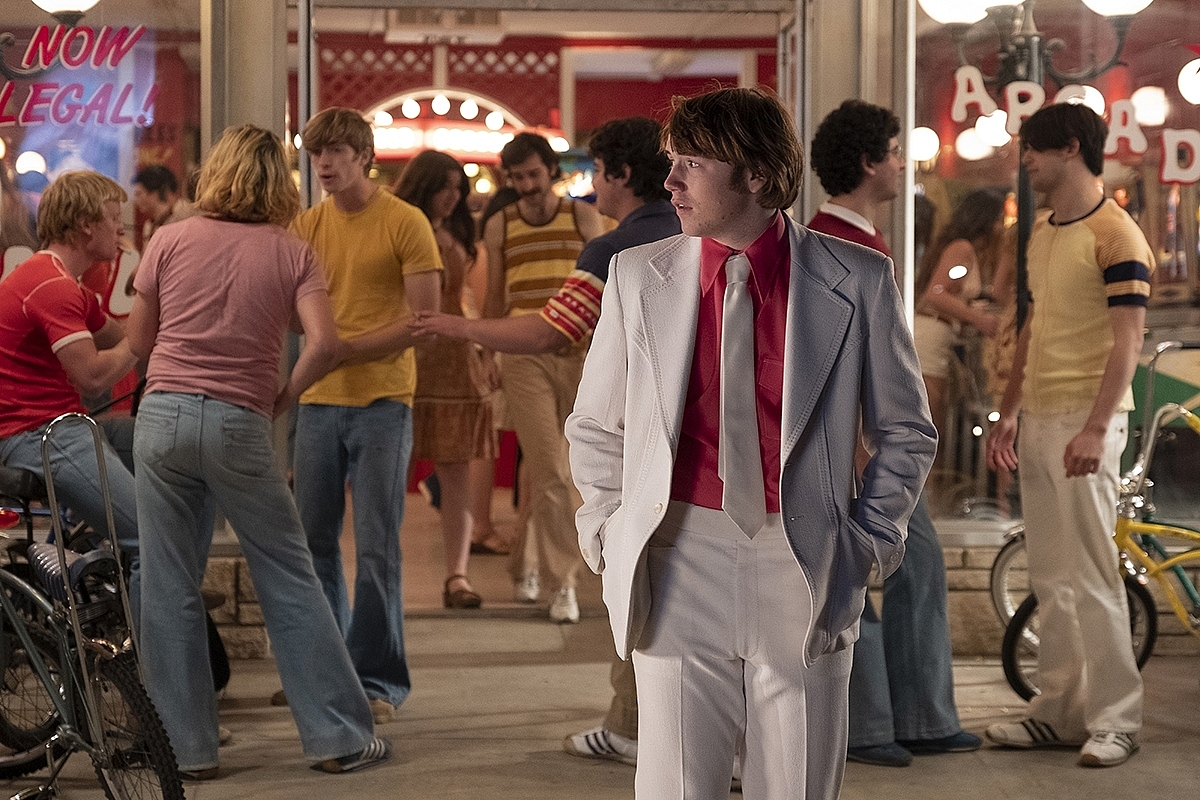
A moment from of Paul Thomas Anderson's "Licorice Pizza." Photo by Melinda Sue Gordon. © 2021 Metro-Goldwyn-Mayer Pictures Inc. All Rights Reserved.
“Fortunately, we tracked down the guy who had supplied carbon arcs to Once Upon a Time… In Hollywood (dir. Quentin Tarantino, DP Robert Richardson ASC), and secured five units for this production. We used them as daylight boosters, to combat strong sun and shadows, and on the interiors. The quality of light they give is remarkable, especially on skin tones, and especially when recorded on to celluloid film.”
Bauman also divulges that he harnessed a lighting technique pioneered by DP Chris Menges BSC ASC, of using clusters of 50 or 60 15W incandescent bulbs to deliver warm and glowing keylights.
“I learned of Chris’s technique when working with the late, great Haris Savides ASC,” says Bauman, “and I decided to use a heavy dose of these on our interior sequences, such as in the Tail O’ the Cock, to bring a real radiance to the restaurant scenes.”
Bauman concludes, “The thing about working with PTA is that his fingerprint is on every aspect of the movie. He’s involved head-to-toe in the whole thing, including the old-fashioned color timing at the lab. How the final picture looks is all in his wheelhouse. It’s great to work with someone who has such a precise vision that threads through the entire picture, and the result looks great.